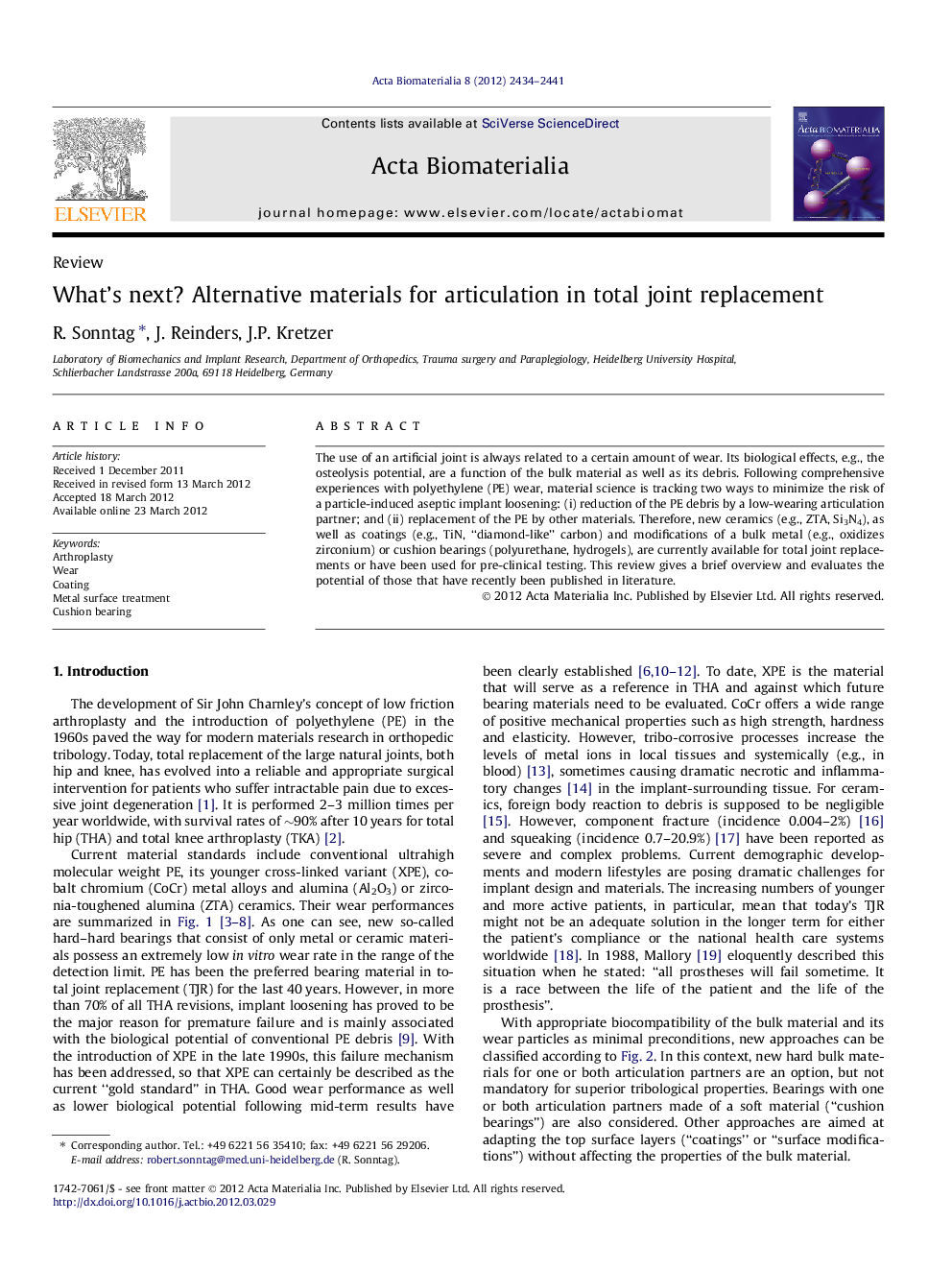| Article ID | Journal | Published Year | Pages | File Type |
|---|---|---|---|---|
| 10159646 | Acta Biomaterialia | 2012 | 8 Pages |
Abstract
The use of an artificial joint is always related to a certain amount of wear. Its biological effects, e.g., the osteolysis potential, are a function of the bulk material as well as its debris. Following comprehensive experiences with polyethylene (PE) wear, material science is tracking two ways to minimize the risk of a particle-induced aseptic implant loosening: (i) reduction of the PE debris by a low-wearing articulation partner; and (ii) replacement of the PE by other materials. Therefore, new ceramics (e.g., ZTA, Si3N4), as well as coatings (e.g., TiN, “diamond-like” carbon) and modifications of a bulk metal (e.g., oxidizes zirconium) or cushion bearings (polyurethane, hydrogels), are currently available for total joint replacements or have been used for pre-clinical testing. This review gives a brief overview and evaluates the potential of those that have recently been published in literature.
Related Topics
Physical Sciences and Engineering
Chemical Engineering
Bioengineering
Authors
R. Sonntag, J. Reinders, J.P. Kretzer,
